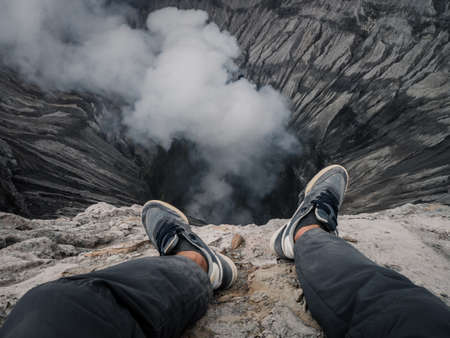1. Introduction: The Language of Ultralight Backpacking
Ultralight backpacking isn’t just about shaving ounces off your pack; it’s a movement that has spawned its own language, rituals, and social dynamics within the American outdoors community. As more hikers and outdoor enthusiasts embrace the “less is more” philosophy, they’ve developed a vocabulary and set of conversational norms that go beyond gear specs and trail conditions. Phrases like “base weight,” “the big three,” and “SUL” (Super Ultralight) pepper conversations, serving as both practical shorthand and subtle signals of belonging. These linguistic rituals create a shared identity among ultralighters, reflecting a culture that values efficiency, innovation, and sometimes even friendly one-upmanship. In this article, we’ll explore how these words and rituals not only streamline communication but also reinforce the unique lifestyle and camaraderie found in America’s ultralight backpacking circles.
2. Base Weight Bragging: Status and Identity
Within the ultralight backpacking community, sharing your base weight—the total weight of your packed gear minus food, water, and fuel—goes far beyond simple numbers. This ritual has evolved into a unique social currency that signals status, experience, and authenticity. Hikers often introduce themselves in online forums or on the trail by declaring their base weight, subtly letting others know where they stand in the ultralight hierarchy.
The act of boasting about a low base weight isn’t just about showing off; it’s a badge of honor that reflects hours of research, careful decision-making, and sometimes even creative DIY solutions. Seasoned backpackers may swap stories about how they shaved off an extra ounce or found the perfect piece of multi-use gear. For newcomers, achieving a lower base weight can become a rite of passage—a way to prove dedication to the ultralight philosophy.
Social Dynamics of Base Weight Sharing
Conversations often center around numbers: “What’s your base weight?” becomes as common as “Where are you from?” This simple question can reveal much about a hiker’s priorities and level of commitment. It serves three main purposes:
- Connection: Swapping numbers and gear lists builds instant camaraderie among hikers who share similar goals.
- Competition: Friendly rivalry motivates individuals to continually lighten their load and share new discoveries.
- Status Signal: Achieving sub-10-pound or even sub-5-pound base weights marks one as an expert or innovator within the group.
Base Weight Benchmarks
| Base Weight Category | Description | Status Within Community |
|---|---|---|
| < 5 lbs (“Super Ultralight”) | Minimalist approach, extreme gear choices | Expert/Innovator |
| 5–10 lbs (“Ultralight”) | Balanced comfort and efficiency | Experienced/Committed |
| 10–15 lbs (“Lightweight”) | Some traditional items included for comfort | Beginner/Evolving |
| > 15 lbs (“Traditional”) | Prioritizes comfort over minimalism | Newcomer/Casual |
The Authenticity Factor
A hiker’s claimed base weight is often scrutinized. Authenticity matters: those who can back up their numbers with detailed gear lists and firsthand knowledge earn more respect. Conversely, exaggerating achievements or relying on untested theories may lead to gentle teasing or skepticism within the group. Ultimately, this ritual strengthens bonds while encouraging everyone to be both honest and resourceful.

3. Gear Talk: Community, Brands, and DIY Innovations
One of the most vibrant aspects of ultralight backpacking culture in the US is the ever-present “gear talk.” Far beyond mere product reviews or unboxing videos, these conversations are a cornerstone for building community, sharing wisdom, and staying on the cutting edge of outdoor innovation.
The Heartbeat of Ultralight Communities
Whether on popular forums like Reddit’s r/Ultralight, local meetups, or trail-side chats on the PCT, gear discussions form an instant bond among backpackers. Swapping stories about what worked (and what didn’t) helps both newcomers and seasoned hikers avoid costly mistakes—and fosters a sense of belonging. These exchanges often start with simple questions—“What pack are you using?” or “How do you keep your base weight so low?”—but quickly evolve into deeper connections over shared experiences and mutual goals.
Spotlight on American Ultralight Brands
US-based brands such as Hyperlite Mountain Gear, Gossamer Gear, Zpacks, and Enlightened Equipment frequently feature in these conversations. Hikers enthusiastically debate the merits of Dyneema packs versus traditional fabrics, or compare the latest quilt models. Sharing honest feedback not only supports fellow adventurers but also drives brand innovation; companies often listen closely to online chatter and trail reports to refine their products for real-world use.
DIY Spirit: Custom Solutions and Trail Ingenuity
The gear talk isn’t limited to store-bought solutions. Many ultralighters proudly embrace DIY culture, modifying existing equipment or creating their own from scratch. From sewing ultralight tarps at home to crafting titanium pot stands out of hardware store materials, these homemade innovations are eagerly discussed and dissected online. Tutorials and step-by-step guides are common, allowing others to learn new skills while keeping costs down and creativity high.
Advice Swapping: More Than Just Recommendations
At its core, gear discussion is about helping each other succeed on the trail. Experienced hikers generously offer tips on shaving ounces off a pack list or troubleshooting a stubborn stove. In return, newer members bring fresh perspectives and sometimes unexpected hacks from outside the usual circles. This open exchange ensures that knowledge flows freely—and keeps everyone striving for that perfect balance between comfort and minimalism.
Ultimately, gear talk acts as both a social glue and an engine for progress within the ultralight backpacking world. Through honest conversation, playful rivalry, and collective problem-solving, this linguistic ritual continues to shape not just what people carry—but how they connect and grow as a community.
4. Insider Jargon: Words and Phrases Only Ultralighters Use
When you step into the ultralight backpacking world, you quickly realize there’s a unique vocabulary that sets seasoned hikers apart from the rest. This insider jargon isn’t just playful; it’s a linguistic handshake, signaling who truly “gets it” and who’s still learning the ropes. Below, let’s illuminate some of the most common terms you’ll hear on the trail and explore how this language fosters a sense of belonging while helping newcomers find their footing.
Key Ultralight Terms Explained
| Term | Definition | Cultural Context |
|---|---|---|
| Gram Weenie | A person obsessed with minimizing pack weight down to the very last gram. | Often used affectionately (or sometimes teasingly) within ultralight circles, showing commitment to light travel. |
| Big Three | The trio of heaviest gear items: tent/shelter, sleeping bag/quilt, and backpack. | Every serious ultralighter discusses strategies for cutting weight here first; swapping stories about favorite Big Three gear is a bonding ritual. |
| Shakedown Hike | A practice hike meant to test out gear and systems before a longer trip. | This term highlights the trial-and-error approach many take before dialing in their final base weight and setup. |
| SUL/XUL | Super Ultralight (base weight under 5 lbs), Extremely Ultralight (under 3 lbs). | Used by those pushing boundaries, often inspiring both admiration and debate within the community. |
| Base Weight | Total weight of one’s pack minus food, water, and fuel. | The centerpiece metric in any ultralighter’s gear talk; boasting or confessing your base weight is almost a rite of passage. |
| Luxury Item | An extra item that isn’t strictly necessary but brings comfort or joy (like a pillow or paperback novel). | Confessing your “luxury item” often leads to supportive camaraderie—or gentle ribbing—among fellow hikers. |
The Power of Shared Language
This specialized vocabulary does more than streamline communication—it builds trust and kinship among ultralighters. Dropping words like “shakedown hike” or referencing your “big three” signals your experience and passion for the craft. For newcomers, learning this jargon is not just about being in-the-know; it’s an invitation to join the conversation, ask questions, and feel included in the group. It also helps demystify complex decisions around gear choices, making the leap into ultralight backpacking less intimidating—and much more fun.
5. Online Forums and Social Spaces: The Digital Campfire
In the modern ultralight backpacking community, much of the “gear talk” and base weight boasting has migrated from remote trails to the digital world. Online forums like Reddit’s r/Ultralight, Instagram posts, and Facebook groups have become virtual campfires where hikers gather to swap stories, share tips, and—of course—compare their pack weights.
The Role of Web Forums in Gear Culture
Web forums serve as both libraries and playgrounds for ultralight enthusiasts. Here, detailed trip reports and gear lists are dissected with an almost scientific rigor, while playful ribbing about who has the lightest shelter or the most creative stove hack is common. These platforms encourage a sense of camaraderie but also foster a subtle (and sometimes not-so-subtle) one-upmanship that’s unique to online spaces. For many, posting a “10-pound base weight” breakdown isn’t just about sharing knowledge—it’s a badge of honor displayed for all to see.
Instagram: Visual Boasting and Inspiration
Instagram adds another layer to this ritual by making base weight boasting highly visual. Photos of neatly organized gear “flat lays,” minimalist packs against sweeping vistas, and short video walkthroughs invite both admiration and gentle envy. Hashtags like #ultralightbackpacking or #baseweightchallenge allow users to join larger conversations, connect with others, and subtly showcase their own expertise or innovation.
Facebook Groups: Community Support and Friendly Debate
Facebook groups blend knowledge sharing with social interaction. Members ask questions ranging from beginner basics (“What’s your go-to lightweight rain jacket?”) to more advanced debates about the merits of Dyneema versus Silnylon. In these spaces, playful boasting is often softened by encouragement and practical advice—a reflection of the generally supportive culture fostered by moderators and long-time members.
Shaping How Gear Talk Is Performed Online
The digital campfire effect means that gear talk is now performed not just for a handful of friends on the trail, but for hundreds or even thousands of fellow hikers around the country. This amplifies both the informative and performative aspects of ultralight culture. While the underlying goal is still to share knowledge and help others hike farther with less weight, there’s also an undeniable thrill in crafting the perfect post that will inspire comments, likes, or even a little friendly rivalry.
Ultimately, these online spaces reinforce and evolve the linguistic rituals of ultralight backpacking. They make it easier than ever for women and men alike to find their community, learn from each other, and participate in a tradition that values both self-sufficiency and social connection—one gram at a time.
6. Gender, Inclusivity, and Community Dynamics
Within the ultralight backpacking community, gear talk and base weight boasting have long been central to group identity. However, these conversations haven’t always felt welcoming or accessible to everyone—especially when it comes to gender dynamics. Traditionally, much of the gear discourse has reflected a male-dominated perspective, where technical jargon and competitive banter sometimes overshadow collaborative learning or inclusive dialogue. For women, non-binary hikers, and those new to the scene, this can create an intimidating barrier to entry.
Shifting the Tone: From Competition to Collaboration
Fortunately, recent years have brought a conscious shift toward more inclusive communication styles in ultralight circles. Many women and allies are fostering spaces—both online and on-trail—where questions are welcomed without judgment and personal experiences are valued as much as technical specs. This evolving tone helps break down stereotypes about who “belongs” in the ultralight world and encourages sharing gear hacks that work for a wider range of body types, budgets, and experience levels.
Amplifying Diverse Voices
Podcasts, blogs, and social media platforms like Instagram have become vital channels for underrepresented backpackers to share their stories. Influential female thru-hikers and LGBTQ+ adventurers are using these platforms to showcase gear reviews tailored to different needs—whether that’s finding packs that fit petite frames or discussing how clothing systems can support people of all gender identities. By amplifying diverse voices, the broader community becomes richer and more innovative.
Encouraging Allyship and Supportive Spaces
Efforts toward inclusivity go beyond just language—they extend into practical allyship. Trail organizations and gear companies are beginning to host women’s backpacking clinics, sponsor affinity group hikes, and feature a broader range of models in their marketing. These changes not only acknowledge different perspectives but also help dismantle barriers to entry for everyone interested in ultralight backpacking.
The result is a community where base weight boasting and gear talk become tools for connection rather than exclusion. When everyone feels comfortable joining the conversation—regardless of gender identity or experience level—the ultralight movement grows stronger, more creative, and truly reflective of America’s diverse outdoor enthusiasts.
7. Conclusion: Rituals That Bind the Ultralight Community
Within the ultralight backpacking world, base weight boasting and gear talk are far more than casual conversations—they’re cherished linguistic rituals that help define and strengthen the community. While it might seem like a simple exchange of ounces and brand names, these discussions foster a unique sense of belonging among members. Swapping stories about the latest titanium pot or sharing tips to shave grams from your setup is how expertise is passed down, often in a friendly, inclusive manner. Newcomers are welcomed with advice and gentle ribbing, while seasoned hikers trade good-natured banter over who has the lightest pack or the quirkiest DIY hack.
These rituals also serve as informal mentorship channels. Beginners find encouragement through shared experiences and practical knowledge, making the daunting process of going lighter feel approachable—and even fun. For women especially, participating in this dialogue helps break down barriers and opens doors to new friendships on trail and online. In a space that can sometimes seem intimidating or competitive, these linguistic traditions invite everyone to join the conversation and celebrate each milestone together.
Ultimately, it’s not just about numbers or gear specs; it’s about connection. The act of talking gear becomes a way to bond, support one another, and enjoy some laughs after long days on the trail. Through these rituals, ultralight backpackers weave together a vibrant, ever-evolving culture—one where everyone has a place at the campfire, no matter how heavy (or light) their pack may be.


